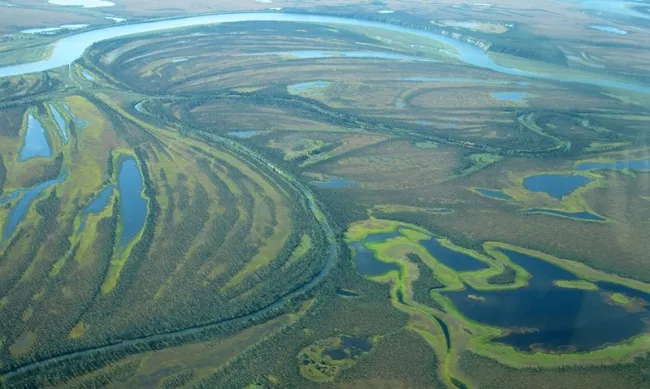
Kobuk Valley National Park, located in northwestern Alaska, is one of the most remote and pristine national parks in the United States. Spanning over 1.7 million acres, the park is home to some of the largest sand dunes in North America, the Kobuk River, and vast areas of tundra and forest. Unlike more accessible parks, Kobuk Valley offers a truly wild and rugged experience, attracting those seeking solitude and a connection with nature. The park is part of the traditional homeland of the Inupiat people, and visitors can still witness their cultural practices, such as the seasonal caribou migration.
History of the Park
Kobuk Valley National Park was established on December 2, 1980, as part of the Alaska National Interest Lands Conservation Act (ANILCA). This act aimed to protect Alaska's natural beauty while also recognizing the importance of the land to Indigenous peoples. The park’s name is derived from the Kobuk River, a vital waterway that has been a lifeline for the region's Indigenous peoples for thousands of years. The valley has a rich cultural history, including evidence of human habitation dating back over 12,000 years. The park remains a critical area for subsistence hunting, fishing, and gathering for the local Inupiat communities.
Main Features
The Great Kobuk Sand Dunes are one of the park's most striking features, covering over 25 square miles. These massive dunes rise up to 100 feet and are remnants of glaciers that once covered the region. The Kobuk River, which runs through the park, is another key feature, providing opportunities for rafting and kayaking. In addition, the park is known for its wildlife, including the Western Arctic Caribou Herd, which migrates through the area each year. Other notable wildlife includes grizzly bears, wolves, and a variety of bird species.
Types of Trails
Kobuk Valley National Park is unique in that it does not have any established trails. Visitors seeking adventure must rely on navigation skills and be prepared for off-trail hiking through challenging terrain. Popular activities include backpacking, river trips, and exploring the sand dunes. The lack of trails adds to the park's appeal for those looking for a wilderness experience without the typical crowds.
Crowd Expectations and Annual Visitors
Kobuk Valley National Park is one of the least visited national parks in the United States due to its remote location and lack of infrastructure. On average, the park sees fewer than 15,000 visitors annually, many of whom arrive by bush plane. This low visitation makes Kobuk Valley an ideal destination for those seeking solitude and an untouched natural environment.
Accessibility for Seniors
Accessibility in Kobuk Valley National Park can be challenging due to its remoteness and lack of infrastructure. Seniors who are physically fit and have experience in backcountry travel may find the park rewarding, but the park is not easily accessible for those with limited mobility.
Accessibility for Wheelchairs
Unfortunately, Kobuk Valley National Park is not wheelchair accessible. The park's rugged terrain, lack of developed trails, and limited facilities make it difficult for visitors with mobility impairments to explore the area.
Park Amenities
Kobuk Valley National Park offers minimal amenities. There are no visitor centers, roads, or facilities within the park itself. Visitors must be self-sufficient and carry all necessary supplies, including food, water, and camping gear. The nearby village of Kotzebue, located outside the park, offers limited amenities such as lodging and supplies. Rangers in Kotzebue can provide information and permits for visitors heading into the park.
Camping Facilities
There are no designated campgrounds in Kobuk Valley National Park. Backcountry camping is allowed throughout the park, and visitors are encouraged to practice Leave No Trace principles. Camping near the Kobuk River and the Great Kobuk Sand Dunes is popular, but visitors should be prepared for changing weather conditions and wildlife encounters.
Access to Lodging
There is no lodging within Kobuk Valley National Park. The closest lodging options are in the village of Kotzebue, which serves as the main access point to the park. Visitors typically arrange transportation by bush plane from Kotzebue to the park, and it’s essential to plan logistics in advance.
Pet-Friendliness
Pets are allowed in Kobuk Valley National Park, but they must be kept on a leash and under control at all times. Due to the park's remote and wild nature, pet owners should be mindful of the dangers posed by wildlife and the challenging environment.
Best Months to Visit
The best time to visit Kobuk Valley National Park is during the summer months, from June to August, when temperatures are milder, and daylight lasts nearly 24 hours. The caribou migration, wildflowers, and the Great Kobuk Sand Dunes are at their most accessible during this time. However, visitors should be prepared for unpredictable weather, including sudden rainstorms and cooler temperatures, even in summer.
Conclusion
Kobuk Valley National Park offers a truly unique experience for those seeking wilderness and solitude. Its remote location and lack of infrastructure ensure that visitors will encounter pristine natural landscapes largely untouched by human activity. While the park may not be suitable for all visitors due to its rugged terrain and limited accessibility, those who make the journey will be rewarded with unparalleled beauty and the chance to witness the raw, untamed nature of Alaska. Whether exploring the vast sand dunes, paddling the Kobuk River, or simply enjoying the solitude, Kobuk Valley National Park is a hidden gem in the national park system.



